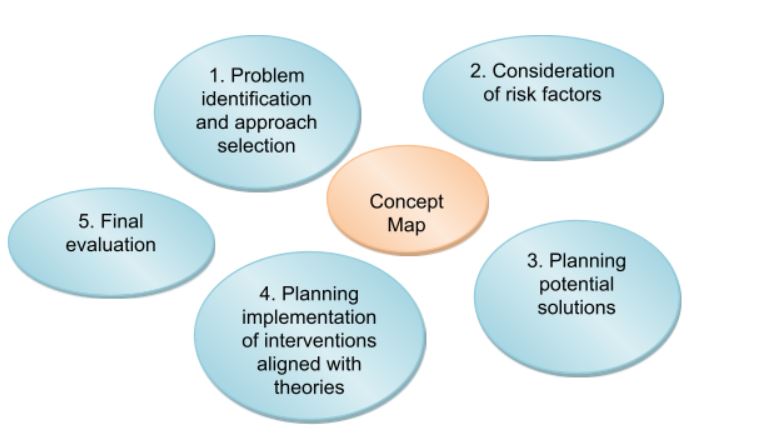The clinical problem for the final project paper is the increased rates of obesity among Mexican-American school-age children in the US. This problem becomes evident due to the current statistics, according to which the mentioned population shows more obesity cases compared to white children. It is essential to pay attention to the cultural aspect while addressing the identified clinical problem. The application of middle-range theories would add value to the project.
In the view of the specified problem, it becomes evident that there is a need for proper planning based on risk factors and needs of the target population. The process of planning should be consistent and agreed with Mexican-American children and their parents. As for potential intervention, the key methods of treating obesity should include adherence to a diet with a high content of fiber, vitamins, and other biologically active components, limiting the use of easily digestible carbohydrates, as well as physical exercises and health education to increase awareness of children along with their parents. It is rather significant to integrate children, parents, researchers, policymakers, nurses, and other interested parties in combating the health issue of obesity.
It is significant to emphasize that some efforts were already made to address the problem of obesity in Mexican-American children. For instance, the National Health and Nutrition Examination Survey (NHANES) was introduced to reveal causes, rates, and potential solutions to health problem in adults and children. NHANES allowed outlining further research needs. Another step towards addressing the mentioned problem was made by the study that discovered the direct correlation between race and inclination to obesity in children. In addition, the above authors established the connection between obesity in childhood and the subsequent weight-associated risks in adulthood. It was revealed that those Mexican-American children who were obese are more likely to encounter similar health issues in their adulthood.
The current evidence represents the need for addressing the given health problem. One more pilot study regarding the mentioned population shows the following conclusion: there is an urgent need to align research and policy. These authors focused on disseminating the findings of previous studies in the Texas-Mexico border region and collecting attitudes towards them. Four major assumptions were identified, including the need for consistent community-based programs, support for community organizations, enhanced infrastructure, and adequate access to parks. The key suggestion expressed by the respondents of the study is that policies should be introduced in collaboration with the local population, specifically their needs and expectations. As for the existing guidelines, one should pinpoint the fact that Mexico’s Congress accepted the legislation in 2010, according to which it is highly recommended to avoid fast food, do sports, and lead healthy lifestyles. The above legislation also refers to Mexican-American children as per the declaration of the Mexican Embassy in the US.
It is also essential to determine risk factors that affect children’s weight. As discovered by the recent study, beverages containing high calorie and sugar contribute to overweight and obesity in Mexican-American children. At the same time, junk food also promotes excessive weight since the body cannot handle too much calorie, thus creating fat. Sleep patterns also matter. The study conducted by the mentioned authors demonstrates that short sleep during long periods of time leads to obesity as the body cannot recover sufficiently and fatigue occurs. Mexican-American children present discrepancy in altitude of metabolic biomarkers that means their inclination to the increased weight in case of violation of metabolism compared to white population.
The approach that will be used in the project paper focuses on Peplau’s theory of interpersonal relations, which treats nursing as an important and therapeutic process that functions in conjunction with others to achieve a patient’s healthy state. At the same time, a patient should feel the need for help that may be achieved by respectful and passionate care. More to the point, Nightingale’s theory of nursing will also be applied as the one providing 13 canons of effective nursing care. In particular, the above theory illustrates that such issues as the influence of peculiarities of the historical epoch, national culture, and the level of socio-economic development of the target population should be taken into account. Specifically to the final project, the solution of the problem should be based on nurses’ professional values, respect for personality, dignity, and freedom, as well as confidentiality. Since children and their parents will be involved in care process, all of the mentioned elements should be considered. The following concept map will be used for the work on the final project paper:

References
Beck, A. L., Tschann, J., Butte, N. F., Penilla, C., & Greenspan, L. C. (2014). Association of beverage consumption with obesity in Mexican American children. Public Health Nutrition, 17(2), 338-344.
Hernández-Cordero, S., Cuevas-Nasu, L., Morales-Ruán, M. C., Humarán, I. M. G., Ávila-Arcos, M. A., & Rivera-Dommarco, J. A. (2017). Overweight and obesity in Mexican children and adolescents during the last 25 years. Nutrition & Diabetes, 7(2), 247-255.
Liu, G. C., Hannon, T., Qi, R., Downs, S. M., & Marrero, D. G. (2015). The obesity epidemic in children: Latino children are disproportionately affected at younger ages. International Journal of Pediatrics and Adolescent Medicine, 2(1), 12-18.
Martinez, S. M., Tschann, J. M., Greenspan, L. C., Deardorff, J., Penilla, C., Flores, E.,… Butte, N. F. (2014). Is it time for bed? Short sleep duration increases risk of obesity in Mexican American children. Sleep Medicine, 15(12), 1484-1489.
McFarlin, B. K., Johnson, C. A., Moreno, J. P., & Foreyt, J. P. (2013). Mexican American children have differential elevation of metabolic biomarkers proportional to obesity status. Journal of Pediatric Gastroenterology and Nutrition, 57(6), 718-721.
Mier, N., Smith, M. L., Irizarry, D., Carrillo-Zuniga, G., Lee, C., Trevino, L., & Ory, M. G. (2013). Bridging research and policy to address childhood obesity among border Hispanics: A pilot study. American Journal of Preventive Medicine, 44(3), 208-214.